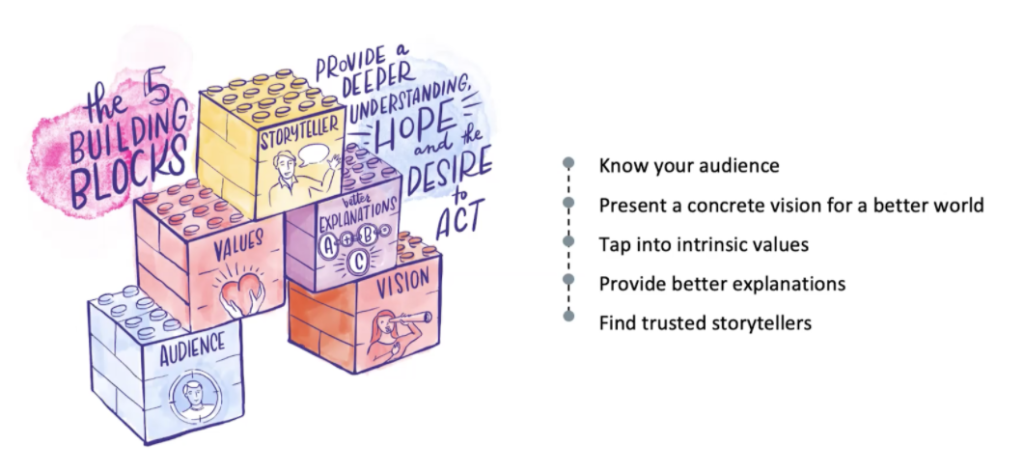UX Australia 2020 started at a cracking pace and kept up the momentum throughout the four day Zoom-enabled conference. The theme was Systems – a huge topic that I feel we have been getting a crash course on in 2020.
This year has also been one to roll with the punches so I entered my first online UX Australia cautiously. It was tight and well produced and the format meant that access to presenters was immediate and it did allow for some cross attendee participation.
In this summary I will be looking at the talk that resonated with me the most – Jess Berentson Shaw’s Narratives for Change: How Effective Stories help us Build New Systems. In a conference on systems this presentation gave us achievable solutions that made me feel that the biggest problems in the world are not lost causes.
I will also be putting my pattern recognition skills to the test and attempt to pull together a common theme of empathy. Finally I look at how the GO Foundation is actively addressing systemic inequality and changing lives by putting culture and education first.
The power of narrative
Recognising the system that you are in is one thing, correcting systems of oppression and inequality is a much harder and nuanced task.
As Desmond Tutu is quoted as saying, “There comes a point where we need to stop just pulling people out of the river. We need to go upstream and find out why they’re falling in.”
The journey of recognition of a system can be one filled with rage and despair. Earlier in the conference our first keynote speaker Tatania Mac used the analogy of the vine English Ivy and its pervasiveness to describe how colonialists wrap, entangle and suffocate growth, freedom and the livelihoods of indegenous people. And how our “employee of the month” culture has its basis in slave management as first developed by Thomas Affleck in 1847.
The rage and despair often comes from thinking that we aren’t in control or that we don’t have the agency to do anything to correct it. However this is a trap and as Shaw points out, we fall into a “Fatalism narrative” where our thinking becomes clouded and we feel like we can’t engage. We build an internal narrative that either the people in power are useless or that the system is rigged against us.
Shaw shows us that this is exacerbated by our “fast thinking”. We have mental models of how we understand and perceive the world. These have to be shortcuts otherwise we would be driven mad by the volume of data we have to process.
Fast thinking is an evolutionary advantage; we gauge another person’s mood by subtle split second changes of expression; and we use our subconscious knowledge of traffic patterns to know how to cross a street.
These shortcuts also help us to understand abstract information and quickly form opinions. However these opinions are welded to our world view and the emotions they invoke make it difficult to empathise and understand facts.
Some examples of “fast thinking” are:
- Trust in perceived expertise and trusted channels.
- Neutral evidence is never received neutrally, we always use emotion to evaluate, how we feel about information tells us how it will fit with what we already believe.
- We often attribute cause and effect to what we can directly sense. This is by far one of the biggest factors for the success of climate change communication.
Our fast thinking is also the cognitive biases that we carry into the world. For example:
-
Normalcy bias – What we have now is what we have always had. We underestimate the need for change. This starts to feed into false information and misinformation.
- Sunk Cost Fallacy – Where we throw good money after bad. We build more roads because we have roads even though that’s not where we should be thinking in terms of climate change.
- Negativity bias – We recall the negative more easily than the positive. This has been the domain of how news stories have been told since the beginning of journalism.
The problem of Fast thinking is that it can create mental models of the world that aren’t based on the best knowledge. This is compounded by digital media due to the way it is built and the way we consume it, this reinforces this unhelpful thinking.
The volume of information in modern media is overwhelming and we naturally fall back onto our mental shortcuts to process everything that is coming in.
For example, a common fast thinking model is Us vs Them. Where people who are trying to effect change in a system are sometimes seen as trying to take away something from another group. The bike vs car debate reinforces this zero sum gain. That is, more for you and less for me rather than changes to bike infrastructure is better for all of us.
So how do we build better narratives?
Shaw gives us the 5 building blocks for change.
- Know your audience – When we focus on the loudest voice, we can inadvertently amplify their message as we myth-bust and negate as we are not telling our own story.
- Vision – People need to be reminded that the future can be better. But in a way that focuses on the end result and not on the steps. Dr. Martin Luther King Jr didn’t say “I have a problem” He said “I have a dream”. By providing a clearer vision this can combat some of the fast thinking that people can fall back onto.
- Values – Tap into intrinsic values. The values that we hold about taking care of each other and the planet. This is looking more at collective wellbeing rather than individual wellbeing.
- Provide better explanations – Facts can be dismissed so better explanations are needed and there are better techniques that can be used to break through the fast thinking.
- Find trusted storytellers – Who delivers your message and the trust that the storyteller has.
Fixing a System
In the final keynote, Shirley Chowdhary gave us a fantastic story of system busting in action. Chowdary shows us how Adam Goodes and Michael O’Loughlin are bringing purpose to young ingenious Australians through their foundation GO.

Systemic racism works by excluding and marginalising people. Part of the vicious cycle is that it causes feelings of low self-worth and devaluing of your own culture. Goodes and O’Loughlin have not fallen into the trap of thinking that it is out of their control. By putting culture at the core of their values, they have built a plan to lift young indgenous Australians through focused scholarships, and fostering aspiration and ambition.
Access to education acts as a leveller and equalizer in society. It provides a way out of inequality by providing people with tools for success and a way for them to frame their future.
“There can be no contentment for any of us when there are children, millions of children, who do not receive an education that provides them with dignity and honour and allows them to live their lives to the full.” – Nelson Mandela.
As of August 2020 they have assisted 532 students including providing 230 technology scholarships that have helped students with little or no access to online learning during this Covid pandemic.
Real empathy is hard to achieve
A theme that ran through the conference is that empathy is our goal but can we be truly empathetic?
Mark Lester Lascama suggested that we give those in need the tools to craft their own experiences and enhance empathy with trust. All the while being mindful of your place of privilege when you think you are practicing empathy or else you can come across as being “mesaianic”, I take this to mean making judgements from a higher moral position and being unintentionally patronising. By recognising your place of privilege you can also assess whether you are indeed being empathetic and not just sympathetic.
Nancy Douyon showed from her time at Uber, that the most effective way to design with empathy is by employing localised teams that have local knowledge. She also showed us how a tool that was built to help deaf drivers communicate had the added benefit of helping non-native speakers as well as the drivers who just didn’t want to talk.
At Microsoft’s Developer Day, Kelly Krout & JP Carrascal showed how the whole production team is turned into researchers and have face to face interviews with clients to further strengthen their understanding and empathy.
Julie Wynn & Chris Webster from EY walked us through their case study where they had the extremely complex task of understanding and empathising with Victoria’s multidisciplinary emergency services. They then had to turn that into a critical response app that could satisfy very diverse requirements.
A social justice worrier
I grew up in New Zealand the son of an immigrant father and non-native (Pakeha) mother and then moved to Australia after finishing university so I was in analysis mode. I have always felt that my background has meant that I am always observing and comparing and up until now did not realise that I was observing systems.
In 2020 when there is so much to care about perhaps we need to shake off the “fatalism narrative” and pick the thing that we are the most passionate about and apply ourselves to that.
I always get a lot out of going to large conferences like these. There has never been time when inspiration was more needed. I greatly appreciate the chance to challenge my bubble, which ironically is a bubble inside a bubble now that we are all working from home. Thank you to UXAustralia for considering the online format and providing such a breadth of quality speakers.









